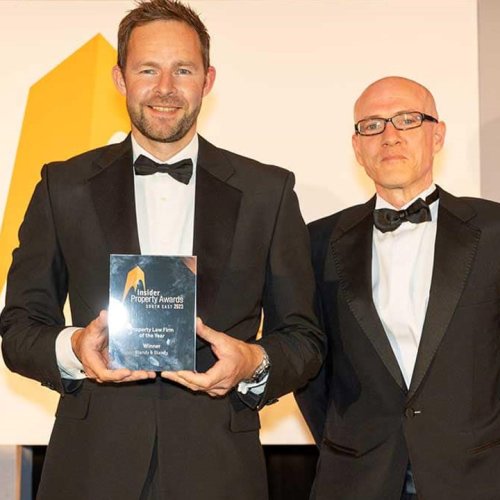Season's Greetings and Christmas Closure Information Read more >
About Us
With offices in Reading, Henley-on- Thames, Wokingham and London, Blandy & Blandy is recognised as one of the Thames Valley’s leading and longest established law firms. With a team of more than 60 lawyers and advisers, we are here to represent you in life and business.
Looking for expert legal advice?
Our Firm

Our Community

Our Environment

Client Feedback

Our International Network

Our History and Heritage
18th Century
Blandy & Blandy can trace its roots back to 1733, with the firm having celebrated its 285th anniversary at its annual summer garden party in 2018.
The Blandys were a well-connected landed family who had lived in Berkshire for many generations.
In the mid-18th century, William Blandy Senior was an ironmonger and coal merchant, based at Duke Street in Reading. He is thought to have lived in London Street. Working in partnership with John Man, they later established the Reading Navigation Company, operating from 'Blandy's Wharf' on the River Kennet. Part of the site was later sold and became better known as Blake's Wharf.
William' son, William Blandy Junior, joined the business and went on to become Mayor of Reading. In partnership with Robert Palmer, a member of another prominent family, Blandy & Palmer was founded in 1797. In addition to coal and ironmongery, the business dealt in slate, timber and salt.
William Blandy Senior's younger son, John Blandy, trained as a solicitor in Henley-on-Thames under his father's cousin, Francis Blandy, who was also the town's clerk.
Francis Blandy's daughter, the now infamous Mary Blandy, was hanged in Oxford for her father's murder in 1752. In April 2022, Blandy & Blandy sponsored a play, 'Mary Blandy: A Retrial' at The Kenton Theatre in Henley-on-Thames. It raised several thousand pounds for the charity-run Chiltern Centre in the town.
John Blandy took a lease of the messuage with gardens courtyard and stable at 1 Friar Street from John Blagrave (as in Blagrave Street) on the 29 December 1798 at a rent of 4 pounds.
It is well known that the building sits on land that was originally the hospitium or guest house of the great abbey founded in Reading in 1121 by Henry I (1100-1135), and dissolved in 1539 under Henry VIII (1509-1547), when Hugh Faringdon, the last Abbot, was executed. An excavation carried out at the property in 1998-99 revealed some medieval tiles, which were probably part of the floor of the hospitium, as they are similar in type to those in the Reading Museum, which came from the Abbey.
Detail from an OS map of 1841 shows 1 Friar Street and the covered walkway leading to the graveyard of St. Lawrence’s Church. There is also reference to a bank, the original site of Stephens Blandy & Co., which became Lloyds Bank.
Prior to John Blandy’s occupation of the property in 1798 it had been a Schoolmaster’s house, believed to be owned by Dr Anthony Addington, who inherited a property from his father in law, Dr Haviland Hiley, headmaster of the Reading Grammar School. An 1843 survey of the Blagrave estates describes 1 Friar Street as ‘formerly the Schoolmaster’s house and after, the Mitre Tavern, formerly in the occupation of John Chaplin and then of James Hawkes’. W.E.M. Blandy suggested that the deep cellars running under part of the garden were a relic from the period as a tavern. It seems that Dr Addington sold the house in 1784 to John Henry Blagrave on his retirement and subsequent move to Windsor to attend King George III. Dr Anthony Addington had earlier treated Francis Blandy, who has been poisoned with Arsenic, leading to his death.
19th Century
1 Friar Street was leased to the partners by the Blagrave Estate until 25 June 1875 when William Frank Blandy bought the freehold.
At this time a new Victorian town hall was being completed to the designs of the highly successful architect Alfred Waterhouse (best known for London's Natural History Museum), which may have prompted William Frank Blandy to commission Frederick W. Albury, a senior partner of one of the oldest and best known firms of architects in Reading, Brown & Albury of 154 Friar Street, to draw up plans to modernize the building from the dated Georgian style to the modern Gothic Revival into which the Town Hall had been transformed. It may have been at this time that the building belonging to and adjoining St Lawrence’s Church was pulled down and the passage through the church yard to Friar Street opened fully.
20th Century
In 1935 Dryland Haslam, a forebear of Haslams, prepared plans on the occasion of a Bill being promoted in Parliament, which proposed the acquisition of 1 Friar Street for an addition to the Municipal buildings. The section of the Bill relating to 1 Friar Street was stopped after a hearing before a committee of the House of Lords.
In 1939, after the start of the Second World War, the Council asked permission to dig a tunnel, called a creepway, five feet below the ground from the basement of the Town Hall through the garden of 1 Friar Street and onto St Lawrence’s Churchyard in order that staff in the Control Centre in the Town Hall could escape if need be following an air raid warning. It seems Mr Blandy agreed to this provided the tunnel was filled in after the war, but there is no evidence to suggest that this tunnel was ever dug.
The Gothic Revival frontage so proudly erected by W.F. Blandy was but fifty years old when on a grey and drizzly day, Wednesday 10 February 1943, a solitary German bomber, identified as a Dornier DO217, flew very low over the town dropping a stick of bombs and machine gunning people in the streets of north Reading and Caversham. Four bombs fell in a line from Minster Street to Friar Street, with the result that the front of 1 Friar Street was completely destroyed. Luckily most shops in Reading were closed on that Wednesday afternoon as it was half day closing, so fewer people than might have been usual were in the town. However 49 people were seriously injured and 41 killed, one of whom was Mr Ted Blandy’s clerk, Mr Frank Seymour, who was working with Mr Ted at the time in an office at the front of the building. Mr Ted also received injuries as a result of the bomb.
After the bomb damage temporary accommodation was taken at number 8 The Forbury, and Mr Ted Blandy instructed Mr Smith, Architect of Reading, to draw up plans for the rebuilding of 1 Friar Street, which was not completed until about 1951. The entrance was now placed at the side of the building, accessed from the footpath leading through St Lawrence’s Churchyard.
The Town Hall had been severely damaged by the bomb as well and the Corporation asked permission to erect temporary premises in the garden of 1 Friar Street. The Corporation gave up these buildings in the late 1970s, when the new Civic Centre was opened, and the Litigation Department of the firm moved into them.
In the early 1990s the building was again altered when the main entrance was placed at the front of the building. The ‘temporary’ buildings, formerly occupied by the Town Hall and subsequently by our Dispute Resolution team, were demolished in late 1999 and in 2000 a large extension was built, providing more office space to accommodate the expanding firm. The architects of this development were Hives & Co., of Reading.
A member of the Blandy family remained actively involved in the firm until the end of the 20th Century, maintaining a constant association spanning more than 200 year. Today, 1 Friar Street remains in family ownership and Blandy & Blandy's main office.
21st Century
With a team of more than 60 solicitors and over 100 staff, based in Reading, Henley-on-Thames and Wokingham, Blandy & Blandy continues to grow.
In 2015 the firm relocated its second Reading office from the building now known as Forbury Works to 33 Blagrave Street, re-establishing a link with the Blagrave name dating back to 1798.
In 2016 Blandy & Blandy opened a new office on Hart Street in Henley-on-Thames, almost opposite Francis Blandy's former home of Blandy House, after acquiring the business of Collins Dryland & Thorowgood LLP. The move reconnected Blandy & Blandy with its roots in the town dating back three centuries. In spring 2019, Blandy & Blandy relocated and welcomed guests to an event at its new offices at 24 Thameside.
In 2018 Blandy & Blandy acquired the private client business of Clarkslegal LLP, also based in Reading.
That year the firm also celebrated its 285th anniversary.
On 1 April 2021, Brenda Long, the firm's first female chair, was succeeded by Nick Burrows, who was in turn succeeded in July 2024 by Claire Dyer, head of the firm's Family Law team. Blandy & Blandy's current joint managing partners are Jonathan Gater and Tim Clark.
At the firm's summer garden party in 2023 Blandy & Blandy celebrated its 290th anniversary, whilst it was announced that a new Wokingham office would be opening later that year. Indeed, the new office opened that October and continues to go from strength to strength.
Today Blandy & Blandy is recognised as a top tier firm in the UK's leading guides to law firms, Chambers UK, Chambers High Net Worth Guide and The Legal 500, and has received a series of notable nominations and awards in recent years.



